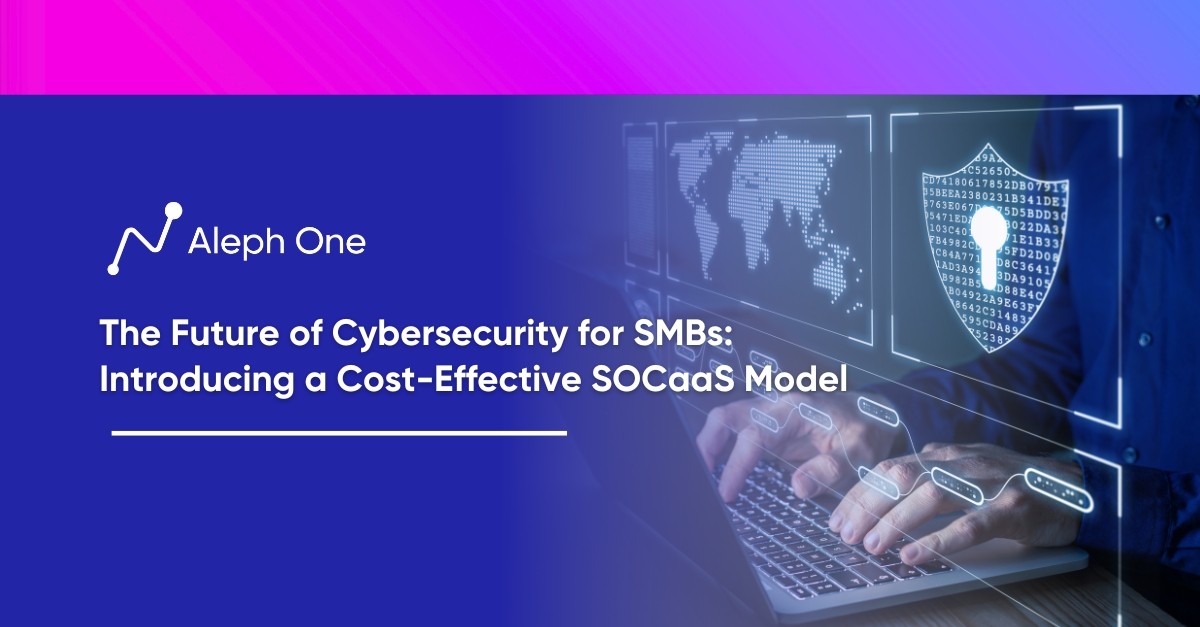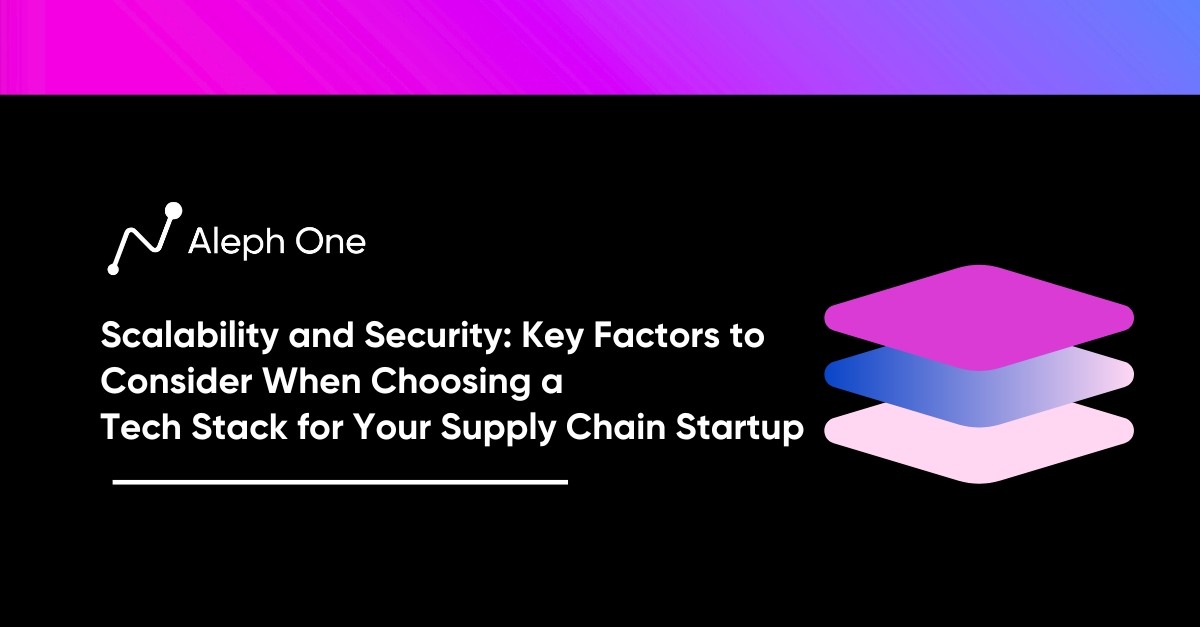Let’s work together to build something amazing. Share your project details and our team will reply to figure out the next steps to your success.

Small and mid-size businesses (SMBs) face an escalating threat from cybercriminals. Verizon’s 2019 Data Breach Investigations Report reveals a distressing reality: 43% of all cyberattacks in the past year targeted SMBs, leading to an average loss of over $200,000 per incident. These enterprises are prime targets due to their often inadequate cybersecurity measures stemming from limited resources and budgets, making them susceptible to ransomware, phishing, and malware attacks. In light of this escalating risk, robust cybersecurity solutions are essential. This article explores a cost-effective answer: the Security Operations Center as a Service (SOCaaS) model. We go into why traditional Security Operations Centers (SOCs) may not be suitable for SMBs, examines the benefits of SOCaaS, investigates the role of AI and automation in transforming SOCs, dissects the costs and benefits of outsourcing security operations, and guides readers in determining whether SOCaaS is the right fit for their organizations.

The Threat of Cybercrime Targeting SMBs
SMBs are attractive targets for several reasons. First, they often lack the cybersecurity defenses of larger enterprises due to limited IT resources and budgets. This makes their systems more vulnerable to ransomware, phishing, and malware attacks. Second, SMBs frequently have access to sensitive customer data, financial information, and intellectual property that is valuable to cybercriminals.
Cybersecurity Attacks
Recent cyberattacks on SMBs highlight the seriousness of this threat. In 2019, Lake City, Florida paid nearly $500,000 in ransom after a ransomware attack crippled the city’s computer systems for over a month. The city had to pay the ransom to restore police records, utility payment systems, and other municipal services. Another attack in 2019 targeted a network of over 100 dental clinics, compromising the protected health information of over 1 million patients. These types of attacks can devastate SMBs through data loss, ransom payments, lawsuits, and reputational damage.
The Cost of Cybercrimes
According to a 2019 report from Cybersecurity Ventures, cybercrime costs SMBs over $200 billion annually and is expected to reach $5.2 trillion annually by 2021. These sobering statistics illustrate why SMBs must make cybersecurity a priority to survive in today’s digital world. Adopting advanced solutions like security operations centers (SOCs) that provide 24/7 threat monitoring and response can help SMBs strengthen their cyber defenses and avoid becoming another victim of cybercrime. Overall, the threat of cyberattacks targeting SMBs is on the rise, but with the right strategy and solutions in place, businesses can effectively manage risks and protect their critical assets.
Why Traditional SOCs Don’t Work for SMBs
Building an in-house security operations center (SOC) is typically not a viable option for small and mid-size businesses. The costs of hiring experienced cybersecurity professionals, procuring advanced tools and technologies, and maintaining 24/7 monitoring capabilities are simply too high for most SMB budgets. According to research from IBM, the average cost to operate an enterprise SOC is over $2.2 million annually. For SMBs, the investment required would likely consume a large portion of their IT budgets and resources.
SOC Requires Specialized Expertise
In addition to the substantial costs, operating a traditional SOC requires specialized expertise often lacking in SMBs with limited IT teams. Cybersecurity professionals must be highly skilled in threat detection, incident response, and security monitoring—challenging and time-consuming skills to develop. SMBs also face challenges providing 24/7 coverage for monitoring and responding to alerts with limited staff. This leaves gaps that cybercriminals can exploit.
Struggle to Keep Up with Advanced Tools
Traditional SOCs struggle to meet today’s sophisticated threats without advanced tools and technologies. Artificial intelligence and machine learning solutions are needed to analyze huge volumes of data, detect advanced threats, and automate response processes. However, these technologies are typically expensive and complex to implement for SMBs with minimal cybersecurity experience.
SMBs Outsource their Security Operations
Rather than building internal SOCs, many SMBs now opt to outsource their security operations to managed security service providers (MSSPs) offering SOC as a Service (SOCaaS) solutions. SOCaaS allows SMBs to leverage advanced tools, technologies, and cybersecurity expertise from MSSPs to monitor networks, detect threats, and rapidly respond to incidents—all at a fraction of the cost of building an in-house SOC. By outsourcing security operations to an MSSP, SMBs can fill the cybersecurity skills gap, achieve 24/7 threat coverage, and access leading-edge technologies to stay ahead of emerging threats.
For SMBs struggling with limited resources and increasing cyber risks, SOCaaS emerges as an ideal solution to address the shortcomings of traditional SOCs. With SOCaaS, SMBs no longer need to choose between solid cybersecurity and budget constraints. They can have both.
The Solution: SOC as a Service (SOCaaS)
For SMBs looking to strengthen their cyber defenses without the high cost of building an internal SOC, Security Operations Center as a Service (SOCaaS) provides an appealing alternative. SOCaaS is a cloud-based model where service providers offer customers 24/7 monitoring, threat detection, and incident response services for a monthly subscription fee.
Tap Into Advanced Security Tools and Expertise
SOCaaS allows SMBs to tap into advanced security tools and expertise they could not afford in-house. Service providers utilize security information and event management (SIEM) platforms, intrusion detection systems (IDS), and log analyzers to monitor customer environments, analyze events, and detect threats. Some providers also leverage AI and machine learning to help identify anomalies and speed up threat detection.
Choose from Tiers of Service at Varying Price Points
With SOCaaS, SMBs can choose from different service tiers based on their needs at varying prices. Basic services include around-the-clock log monitoring and analysis to identify potential threats. More advanced services add on proactive threat hunting, vulnerability scanning, and incident response for confirmed threats. Some providers offer additional a la carte services like compliance monitoring, risk assessments, and cybersecurity training.
Alert Logic, Arctic Wolf, Proficio, and Red Canary
Popular SOCaaS providers include Alert Logic, Arctic Wolf, Proficio, and Red Canary. These providers charge between $50 to $200 monthly for basic monitoring and threat detection for a small business network. Enterprise-level plans with added features like threat hunting and incident response typically cost around $200 per month.
While SOCaaS may provide a different level of customization than an in-house SOC, for SMBs it is an opportunity to gain comprehensive threat visibility and protection they would otherwise lack. With tight budgets and limited security expertise, outsourcing to a SOCaaS provider is often the most pragmatic choice for improving cyber defenses and managing risks. With the right provider, SMBs can tap into a mature SOC environment without the burden of building one themselves.
AI and Automation: The Technologies Transforming SOCs
Artificial intelligence (AI) and automation enable SOCaaS providers to improve threat detection and response dramatically. Machine learning algorithms analyze huge volumes of data to identify suspicious activities and potential threats that would otherwise go unnoticed. AI also helps reduce false positives by learning to distinguish between normal network activity and real threats.
Automation in SOCs
Automation speeds up many of the routine tasks performed in SOCs. For example, AI chatbots can automatically handle initial communication with customers reporting a cyber incident. Automation also allows SOCaaS providers to respond faster to detected threats by initiating containment procedures within seconds. Some providers even offer fully automated remediation for certain types of threats.
User and Entity Behavior Analytics (UEBA)
Another use of AI is for proactively hunting threats that have evaded detection. User and entity behavior analytics (UEBA) applies machine learning to detect subtle changes in network activity that could indicate a breach. By analyzing data from multiple sources, UEBA can spot threats that would be nearly impossible to see using manual methods alone. SOCaaS providers with mature UEBA programs can identify threats that have persisted undetected for months or even years.
SOCaaS Providers Offer Affordable and Scalable Services
While AI and automation are critical for any modern SOC, these technologies are especially valuable for SOCaaS providers. Manual threat detection and response could be more realistic at the scale of monitoring thousands of customer networks. AI and automation also allow SOCaaS providers to offer more affordable and scalable services. If they had to rely primarily on human analysts, the cost would be too high for most SMBs.
Some of the leading SOCaaS providers are at the forefront of applying AI for cybersecurity. Companies like Arctic Wolf, Redscan, and eSentire are investing heavily in developing proprietary AI and machine learning technologies to enhance their detection and response capabilities. As AI continues to advance, SOCaaS providers will be able to deliver even more sophisticated and effective threat monitoring and defense for SMBs at lower cost. For organizations that can’t build their own AI-enabled SOC, outsourcing to an AI-powered SOCaaS is the next best option.
The Costs and Benefits of Outsourcing Your Security Operations
While SOCaaS can provide significant cost savings over building an in-house SOC, the fees for outsourcing your security operations can still vary greatly depending on the provider and services required. Basic monitoring and alerting services may cost between $50,000 to $200,000 per year for a small business with limited data and systems. For mid-size companies with more valuable data and frequent attacks, advanced threat detection and incident response services may cost $250,000 to $500,000 annually.
Benefits of Outsourcing to a SOCaaS Partner
The primary benefits of outsourcing to a SOCaaS partner are reduced costs, access to advanced security technologies, and 24/7 coverage and monitoring. By leveraging a cloud-based model, SOCaaS providers can offer services at a fraction of the cost of an in-house SOC. They can also deploy new technologies like machine learning, AI, and automation that most SMBs would not have the resources or expertise to build themselves. With around-the-clock coverage, SOCaaS partners also provide constant monitoring to detect threats quickly and respond to incidents anytime.
Downsides of Outsourcing Security Operations
However, there are some downsides to consider with outsourcing security operations. You lose some control and visibility into day-to-day monitoring and response activities. There are also risks in sharing sensitive data and access with an outside organization. It is critical to thoroughly vet SOCaaS providers to ensure they have strong security practices themselves and will handle your data responsibly. There is also a small risk of service disruption if a provider experiences an outage or other issues with their platform.
For many SMBs, the significant cost savings, access to advanced capabilities, and 24/7 coverage far outweigh the potential downsides of outsourcing security monitoring and response. However, each organization must evaluate their own cyber risks, resources, and risk tolerance to determine if SOCaaS is the right approach over building their own in-house operations center. With the proper due diligence, outsourcing to a trusted SOCaaS partner can be an extremely effective way for SMBs to strengthen their cyber defenses at a fraction of the cost.
Is SOCaaS Right for Your Organization?
SOCaaS can be an excellent solution for SMBs with limited IT security resources and expertise that want to strengthen their cyber defenses. However, it may only suit some organizations. Some factors to consider when determining if SOCaaS is the right choice for your company include:
Limited Internal Security Capabilities
If your organization struggles to monitor logs, detect threats, and respond to incidents due to a lack of security tools, technologies, or staff, SOCaaS can help fill those gaps. The service provides access to advanced capabilities that would otherwise be unavailable.
High-value Data or Frequent Attacks
If your SMB stores sensitive customer data, intellectual property, or other digital assets that would be a prime target for cybercriminals, the 24/7 monitoring and threat detection of SOCaaS becomes essential. Organizations that have experienced cyberattacks may also benefit from enhanced security monitoring and response.
Low Cybersecurity Maturity
For SMBs with an immature cybersecurity program, SOCaaS is an easy way to strengthen defenses and significantly gain visibility into vulnerabilities and threats. The service can help lay the foundation for building a more robust security operations function over time.
Cost Constraints
While SOCaaS is more affordable than building an in-house SOC, the costs may still be too high for some SMBs. Organizations will need to weigh the potential benefits of the service against their budget to determine if it’s cost-effective. Some providers offer more customized and scalable solutions for smaller companies.
Choose the Best SOCaaS Provider for your Startup
When evaluating SOCaaS providers, consider their service offerings, use of AI and automation, customer support and reviews, integration capabilities, and costs. The provider should offer a solution tailored to the specific needs of SMBs. With the right service and provider, SOCaaS can be an invaluable partner in establishing a strong cybersecurity defense for small and mid-size organizations. But it requires careful assessment to determine if it is the optimal strategy based on your company’s unique situation.
FAQ
What are the immediate steps SMBs can take to protect against the growing threat of cybercrime if SOCaaS is out of their budget for the time being?
If SOCaaS is currently out of the budget, SMBs can still take immediate steps to strengthen their cybersecurity. Firstly, they should implement basic cybersecurity best practices, such as regular data backups, system updates, and employees training on detecting suspicious activities or phishing attempts. Using firewalls, antivirus software, and secure passwords can also help prevent attacks. Additionally, businesses should prioritize protecting their most sensitive information by restricting access and encrypting data when possible.
What are the criteria that a small or midsize business should consider when choosing a SOCaaS provider or weighing the options between different providers?
When choosing a SOCaaS provider, SMBs should consider factors such as the provider’s reputation and customer reviews, the range of services provided, cost and scalability of those services. The provider’s ability to tailor their services to the specific needs of the SMB is also essential. Other considerations include the use of advanced technologies like AI and machine learning, the speed and efficiency of their incident response, and the level of customer support offered by the provider.
Could you give examples of situations where SMBs might choose not to go for SOCaaS, and what could be their alternatives?
Although SOCaaS can be a great solution for many SMBs, it may not suit all. For instance, businesses with highly sensitive data might prefer to keep their security operations in-house to maintain maximum control. Alternatively, organizations with high cybersecurity maturity and a capable IT team could prefer improving their current infrastructure using modern security tools instead of outsourcing. Their alternatives could include building a simple in-house SOC, investing in advanced cybersecurity software, or training their existing IT staff to handle cybersecurity issues.
Get the latest news and updates from Aleph One in your inbox.



